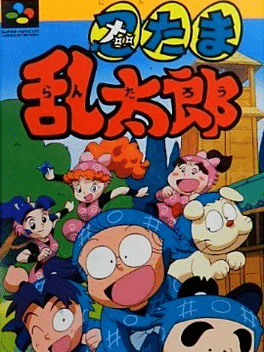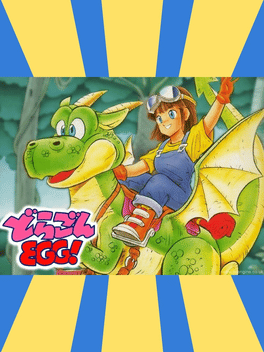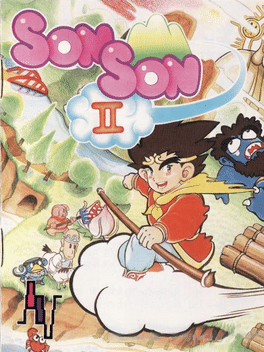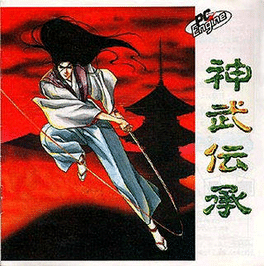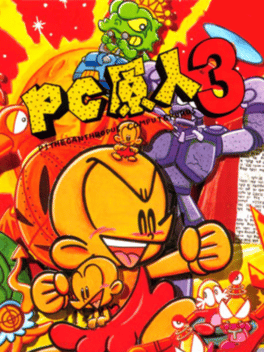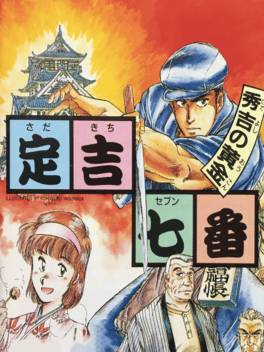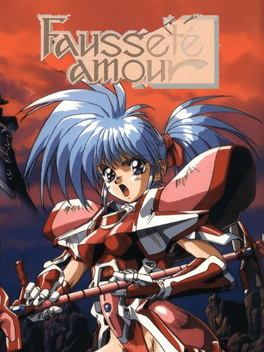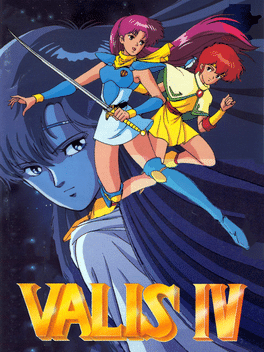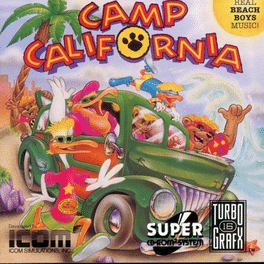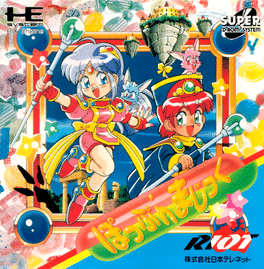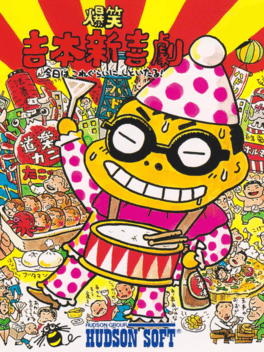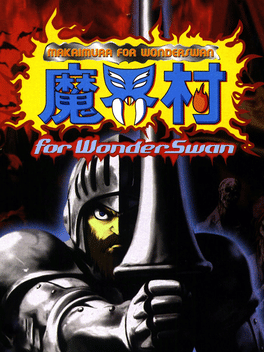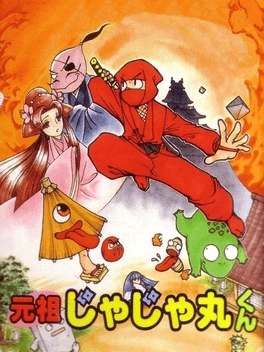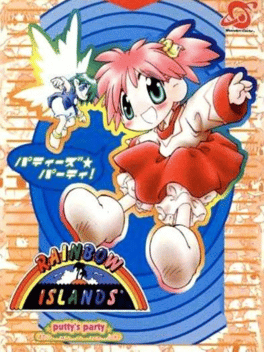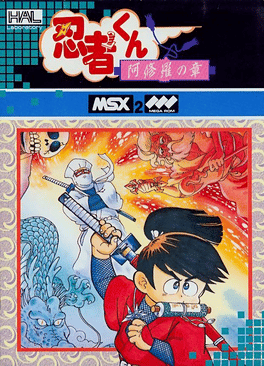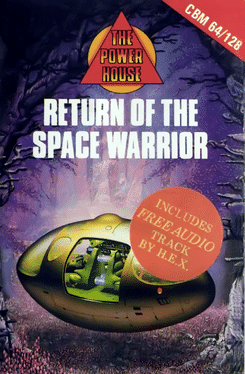Most Popular Playstation 2 Games - Page 291
-
Doraemon: Nobita no Dorabian Night
1992
Taking a different route to its maze-based predecessor, this Doraemon game is a side scrolling platformer with a simple, colourful look. You have to rescue your friends who have dived into various books and are pursued by the inhabitants within. You start off having to avoid the wandering beasties, but eventually get hold of such items as a gun that freezes anything in your path for a moment. Along the way you get to ride on dinosaurs, crawl under moving stone blocks, creep along precarious ledges and slide down water chutes. -
Nintama Rantarou
1995
Nintama Rantarou
1995
The first game based on the Nintama Rantarou anime developed by Culture Brain in 1995. Followed by numerous sequels on multiple systems. Nintama Rantarou ("Ninja Boy Rantarou") is a platformer for the Super Famicom and the first of five games on the system to be based on the 1993 anime Nintama Rantarou, which was adapted from the manga Rakudai Ninja Rantarou, and features the lighthearted adventures of a bespectacled boy and his two best friends as they try to graduate ninja school. As Rantarou, Shinbei or Kirimaru, the player progresses through a series of stages using their ninja powers to keep out of trouble. The first part of the game ties into the school setting with classes that teach the player vital mechanics in the game, such as climbing walls and crouching under projectiles. -
Dragon Egg!
1991
Dragon Egg!
1991
Dragon Egg! is a 2D platformer where you jump and attack enemies as you make your way through linear stages. You start off only being able to hit enemies up close with the dragon egg, but you can find fire orbs dropped by dead enemies. When you collect enough of them, the egg hatches and the dragon will breathe fire from a distance. Grabbing more orbs causes the dragon to grow up, gradually increasing the range of your attacks and even giving you a slight hover at the highest level. The game also has a currency system and stores, which can provide additional fire orb power-ups and other useful tools. -
PC Kid 3
1993
-
Jigoku Meguri
1990
Jigoku Meguri
1990
Bonze is a Buddhist monk passing through Hell with only his prayer beads to protect him in this horror-themed Arcade platform. Bonze Adventure, or Jigoku Meguri ("Hell Tour"), is an Arcade platformer featuring the eponymous Buddhist monk Bonze has he makes his way through the Shinto/Buddhist equivalent of Hell. He is beset by demons and yokai from all sides but is able to exorcise them with his prayer beads, which are thrown outwards with a bouncing motion. Jigoku Meguri was first released to the Arcade in 1988 and later saw a Japan-only PC Engine port in 1990. -
Son Son II
1989
Son Son II
1989
This platformer sequel to Son Son was only released on the PC Engine in Japan. Son Son 2 is the direct sequel to Son Son and features an interpretation of the Son Goku character from ancient Chinese novel Journey to the West. Unlike the first game, which played like a ground-based scrolling shoot-'em-up with several floors the character could switch between, Son Son II plays much more like a traditional platformer, specifically Wonder Boy and even more overtly Capcom's earlier arcade game Black Tiger. Son Son attacks with his extendable staff (based on Sun Wukong's Ruyi Jingu Bang weapon) and can defeat enemies to earn coins, which can be spent on upgrades and health refills. The player also needs to find a key on each stage before they can reach the boss. The goal of the game is to rescue the other members of his party: Xuanzang (Tripitaka), Pigsy and Sandy. They are kidnapped during the opening cutscene by the final boss, who is depicted as a mysterious silhouette. Son Son II is also one of the earliest Capcom -
Jinmu Denshou Yaksa
1989
Jinmu Denshou Yaksa
1989
A pseudo-3D third-person rail shooter of the Space Harrier mold. It had multiple developer credits and is exclusive to the PC Engine. Jinmu Denshou is an action game in which the player character marches towards the horizon while enemies fly towards him. It looks and plays like Sega's Space Harrier, its clear inspiration, though a major difference is that the main character is a samurai-like figure who is usually limited to attacking incoming enemies with his sword. After an upgrade, he is able to fire projectiles and he can also charge up an attack and unleash it to cause a significant amount of damage. The game has a few superficial platforming elements as well. Development of the game is credited to three separate teams: obscure TG-16 developers Manjyudo, Wolf Team (better known for their Tales series) and Goblin Sound who were responsible for the music. -
PC Genjin 3 Special
1993
-
Sadakichi Seven
1988
-
Fausseté Amour
1993
Fausseté Amour
1993
This is the adventures of Koruku Ransu, a young blue-haired warrior. The evil lord Goat Bone has kidnaped her beloved sister and also controls the minds of most of her best friends. Koruku wears a strong pink armor Through seven long stages, one of Kokuru's friend awaits at the end of each one of them - however, she will have to defeat their dark side first and free their controlled minds. -
Bonk 3: Bonk's Big Adventure
1993
Aaagh! What's that Evil King drool doing back in the Dinosaur Kingdom?! Didn't Bonk get rid of him last time? Guess not, huh? Now it's up to our skull-splitting, head-butting, rock-smashing, monster-bashing prehistoric hero Bonk to put an end to Drool's dastardly deeds once and for all! Watch Bonk grown into huge fire-breathing Bonk or shrink into the Mini-Size Bonk and take on tons of cool new enemies like RocketMan, Robo Turtle and Crazy Lady. Or how about smashing up a few Booga Boogas or Snippies along the way. It's the ultimate bash-o-rama! -
Valis IV
1991
Valis IV
1991
Yuko has become the goddess of the world of Vecanti and has watched over the world in peace since the defeat of Glames. Trouble brews when the Dark World prince named Galgear begins to search for a magical ring. This ring increases his powers, but to the loss of control he could have maintained under its effects, and the gods of Vecanti recognize this and imprison Galgear inside a crystal sunk into the ocean. Fifteen years pass, and Galgear manages to break out of his prison, kidnapping the former heroine Valna and being pursued by troops led by Cham as a result. A member of her band, named Lena Brande, requests permission to infiltrate Galgear's stronghold and free Valna. -
Camp California
1993
Camp California
1993
Byron the surfing bear must rescue his lil' bro and their three friends and stop a crew of rats from destroying their beach and preventing a big rock n' roll concert. Featuring music from the Beach Boys, this radical adventure is cleans up the streets and hits the beach! -
Pop 'n Magic
1992
Pop 'n Magic
1992
A static screen action game in the style of Bubble Bobble or Don Doko Don, Pop 'n Magic allows you to trap enemies by firing your wand at them, then pick them up and throw them across the screen to destroy them. The bubbles they are trapped in are specific colours and care must be taken not to throw two of the same colour together as this will release the (now quite upset) creatures inside. -
Bakushou Yoshimoto ShinkiGeki
1994
The game is based on the comedy TV show Yoshimoto no Shinkigeki, which in its turn is based on a theatrical comedy show popular in Osaka and its surroundings. The game stars characters that either look like the actors from the TV show and/or resemble characters played by them. The show consists of short episodes which are depictions of comical situations, and are not related to each other story-wise. Same can be applied to the game: there is no real story, just a stretch of hilarious and intentionally impossible situations the protagonists find themselves in. -
Makaimura for WonderSwan
1999
Makaimura for WonderSwan (Japanese: 魔界村?, "Demon World Village for WonderSwan") is a game for the WonderSwan developed by Capcom and published by Bandai in 1999 and is part of the Ghosts 'n Goblins franchise. Sharing similar gameplay to its predecessors, Makaimura also shares enemies, weapons and backgrounds from the previous three games. Unique features include double paths from the second till the fifth levels, swimming in water and a level which requires the player to rotate the wonderswan by 90 degrees as Arthur climbs and swings down a rope in a vertical shaft. Unlike other games, the player is not required to repeat the game after the penultimate level in order to get the one weapon to defeat the final boss Azrael. -
Ganso JaJaMaru-kun
1999
Ganso JaJaMaru-kun
1999
Ganso JaJaMaru-kun is a remake of the video game Ninja JaJaMaru-kun released in Japan on April 15, 1999 by Jaleco for the WonderSwan. It is an enhanced version of the original Famicom game with better control, though it uses monochrome graphics due to being an original WonderSwan game -
Rainbow Islands: Putty's Party
2000
Rainbow Islands: Putty's Party is an Action game, developed by DigitalWare and published by MegaHouse, which was released in Japan in 2000. -
Ninja-kun: Ashura no Shou
1987
As with the original Ninja-Kid, the goal of each stage is to defeat the many enemies roaming around by first reaching them and then throwing ninja stars at them. Ninja-kun can also acquire scrolls that briefly give him stronger attacks, like a fire burst that takes out all nearby enemies. Each stage (or "scene") has a different layout, with some being merely a single screen (such as Scene 1) as well as larger vertically- and horizontally-scrolling stages. The enemies are usually different too, with increasing difficulty. -
Return of the Space Warrior
1986
Edward Egg must defend planet Egg from the Space Warriors who have recently returned. Return of the Space Warrior is a Joust clone this time with eggs instead of birdies.

